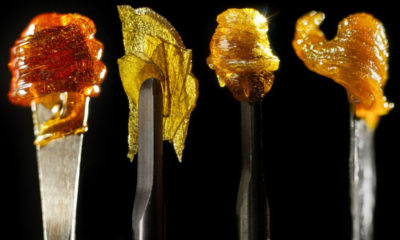The Art of Data
BDS Analytics compiles cannabis data points to watch industry trends.
Weed is moving further and further away from the rebel aesthetic it once occupied. Storefront operations and new consumers are stripping away at the stoner stereotype, and in post-legalization America, much of the cannabis sold in stores doesn’t even resemble the sticky green buds once swapped for cash in discrete handshakes.
As cannabis evolves and products and consumers change, understanding the industry is crucial for those operating businesses. Data can help dispensary owners and investors get a feel for the landscape they’re operating in, but collecting and analyzing figures is no small task.
Roy Bingham, CEO and Co-Founder of the market data analysis firm BDS Analytics, said that unlike other major markets, “In the cannabis industry, nobody has those sorts of resources.”
Bingham, who has experience mining data in other industries, founded BDS Analytics — operating out of Boulder, Colorado — to step in and provide the cannabis industry with three important resources: point-of-sale data, consumer surveys and investor research.
Point-of-sale data — which tracks products, brands, and prices at the register — is most “foundational” to their operations, Bingham says. Essentially, it allows clients to conceptualize consumer habits and compare the market shares of different products. Greg Shoenfeld, vice president of operations at BDS Analytics, describes this leg of their work as the “Nielsen of cannabis.”
What they’ve found is while the market for legal weed is expanding, good ol’ bud is falling out of favor.
“The fastest growth is coming from many of the products that weren’t readily available before dispensaries and retailers were present,” Shoenfeld said, adding that flower sales in Colorado’s first quarter of 2017 verses the first quarter of 2016 increased “a more modest 21 percent, sales of edibles grew 50 percent, concentrates grew 48.5 percent, and topicals grew 55 percent.”
According to Bingham, edibles have a market share lower than one might expect, as they account for only account for 15 percent of sales revenue in Colorado.
Important for BDS Analytics to note in their research is the fact that the cannabis industry is scattered across different states and regulatory guidelines, and markets are not uniform across the United States.
Oregon, for example, only moved to allow concentrates and edible last June. BDS Analytics observed that these categories then “took off very rapidly, immediately, from there onwards” until manufacturers hit a bump in road. Difficulties with licensing, testing, and approval of these products “took the wind out of market in the last quarter of the year,” Bingham said, adding that the market seems to be recovering from the setback.
The East Coast-West Coast divide will create some different looking markets as well.
“You can’t immediately assume that what happened in the other states will happen in the same way in Massachusetts, for example,” Bingham said, adding that there, a vertical integration model and limited number of licenses will likely result in around 200 stores compared to Colorado’s 700. With Massachusetts, Bingham expects only dispensary-affiliated brands to arise, allowing for fewer products and choice until 2018.
BDS data points also show that differences in regional policies also influence public opinion. Linda Gilbert, managing director of the Consumer Research Division, said she’s excited about the findings of a recent report that attempted to provide a “comprehensive look at how the public is thinking and behaving toward cannabis.”
Her BDS Analytics report Public Attitudes and Actions Toward Legal Cannabis explains the types of consumers and what they want from the cannabis industry.
She found that in Colorado, the public was less likely to hold negative attitudes about cannabis and its relation to addiction, mental health and crime. In Colorado, where cannabis has been sold legally since 2014, the public is less inclined than those in California to believe oft-repeated claims about the harms of cannabis.
Gilbert, Shoenfeld and Bingham all point to an industry becoming increasingly similar to other businesses — often shedding the posters and the tie-dye in favor of more upscale design. To be taken seriously, the cannabis industry must earn the trust of new consumers. To BDS Analytics, that means providing data that is factual and informative.
“We need good, professional people doing good, professional research because, if somebody pees in pool, all of the sudden, it gets a lot harder for everyone else to go swimming,” Gilbert said.
Originally published in Issue 27 of Cannabis Now. LEARN MORE
TELL US, what cannabis statistics do you find intriguing?



























